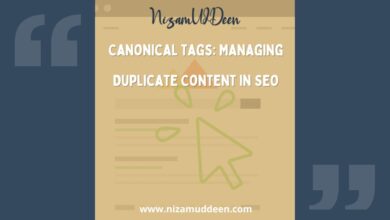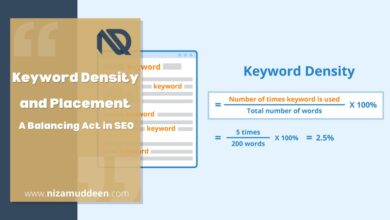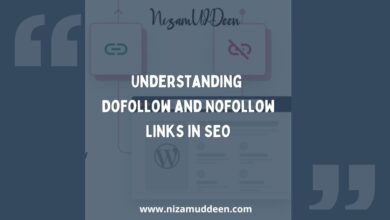Think of your website like a book.
The first page is super important because it sets the tone for the whole story.
Similarly, starting of any landing page set the same tune which is called “above-the-fold” content on a website. It’s the first thing people see when they visit, before they even start scrolling.
But making this part of your website really stand out can be tricky.
You need to use catchy headlines, convincing words, and clear buttons to get people interested. It’s like trying to grab someone’s attention in a crowded room!
To do well with above-the-fold content, you need to understand a few things.
First, you’ve got to know what it is and why it’s important.
Then, you need to find the right words people are searching for, which is called “keyword research“.
After that, you’ve got to create content that’s interesting and helpful for your visitors.
But it’s not just about words.
You’ve also got to make sure your website looks good and is easy to use, especially on phones. And once your site is up and running, you’ll want to keep an eye on how well it’s doing and make changes as needed.
Lastly, you’ve got to stay updated with the latest changes happening in the online world.
What is Above-the-Fold Content?
Above-the-fold content refers to the position and visibility of a webpage’s content that is immediately visible to users without the need for scrolling. It is a crucial aspect of search engine optimization (SEO) because users tend to focus their attention on this prominent section of the page.
It is essential for optimizing your content and increasing visibility in search results by understanding the concept of above-the-fold ranking.
Factors influencing above-the-fold Content
Several factors influence above-the-fold content, determining how prominently your content appears in search results.
It is crucial for optimizing your above-the-fold content effectively by understanding these factors.
Here are the key factors to consider:
Page loading speed:
Search engines prioritize fast-loading websites as they enhance user experience. Slow-loading pages not only lead to a higher bounce rate but can also result in lower above-the-fold rankings.
Optimize your website’s performance by minimizing file sizes, leveraging browser caching, and optimizing code to improve page loading speed.
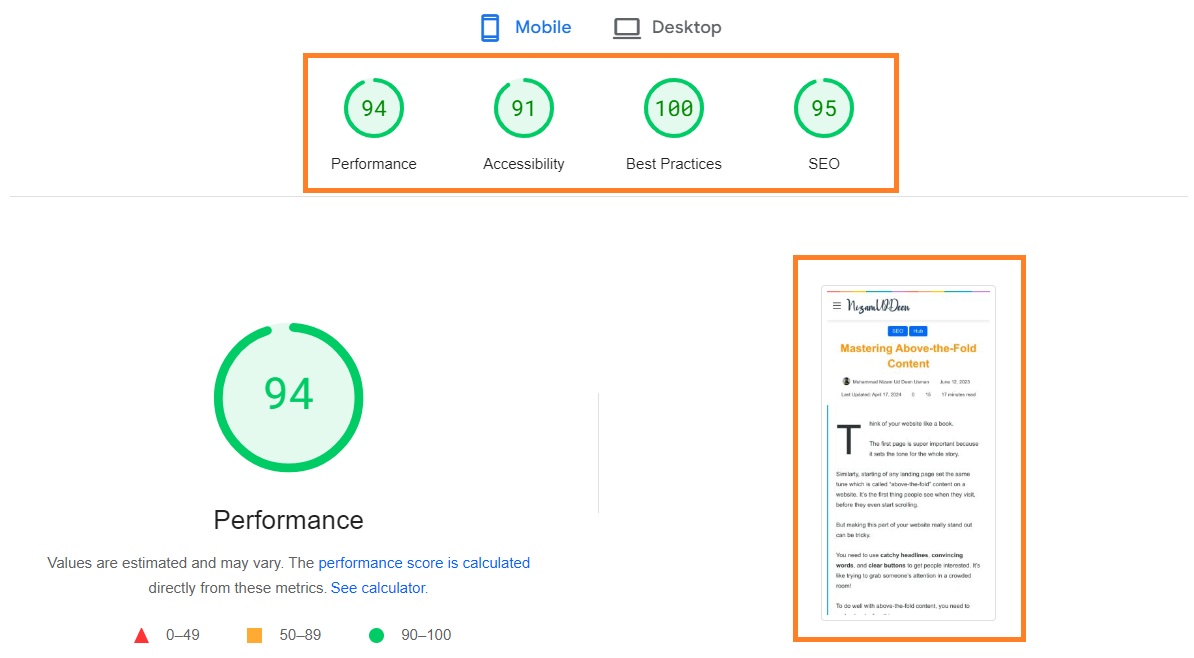
Mobile optimization:
With the significant increase in mobile internet usage, search engines give preference to mobile-friendly websites.
Ensure your above-the-fold content is optimized for mobile devices, with responsive design, mobile-friendly layouts, and appropriately sized images.
This ensures a seamless user experience across different devices and positively impacts above-the-fold rankings.
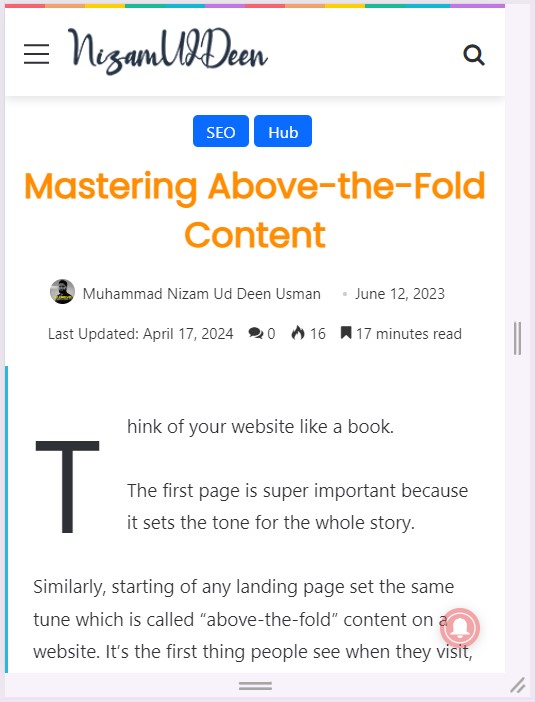
Content relevance:
The relevance of your above-the-fold content to the user’s search query is a critical factor.
Search engines analyze various elements, such as headlines, introductory paragraphs, and key information visible above the fold, to determine content relevance.
Optimize your content by incorporating relevant keywords, providing clear and concise information, and aligning with the user’s search intent.
User experience:
Search engines prioritize websites that offer a positive user experience.
Factors such as easy navigation, intuitive design, clear and readable fonts, and visually appealing layouts contribute to a positive user experience.
Optimize your above-the-fold content by creating an engaging and user-friendly interface that encourages visitors to stay on your page.
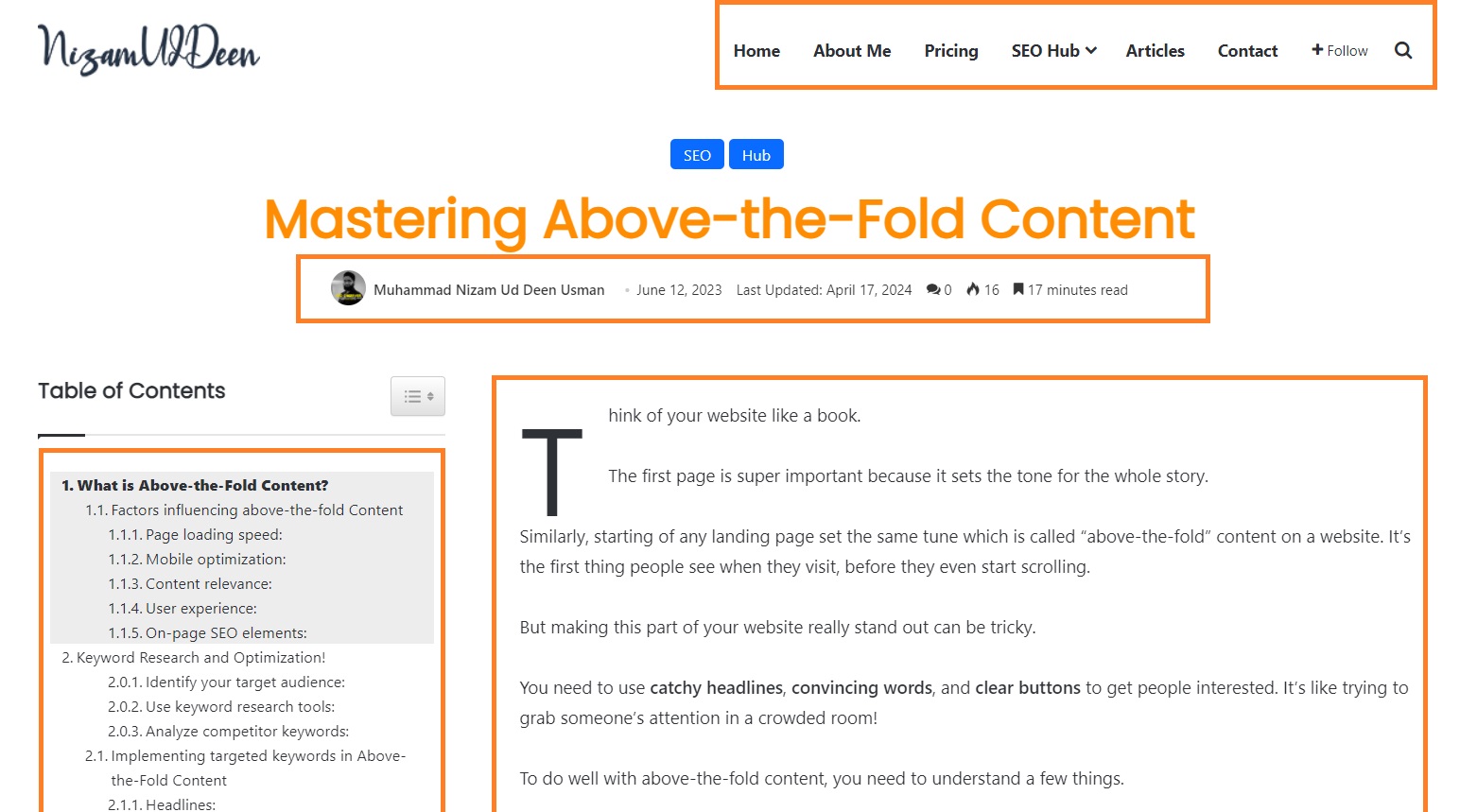
On-Page SEO elements:
Optimizing on-page SEO elements plays a crucial role in above-the-fold ranking. This includes optimizing meta tags, meta descriptions, headers, and URLs.
Incorporate targeted keywords naturally within these elements to improve the visibility and relevance of your above-the-fold content.
You can improve your above-the-fold ranking and increase your visibility in search results by considering and optimizing these factors.
Keyword Research and Optimization!
Keyword research is a fundamental step in optimizing your above-the-fold content. It involves identifying the keywords and phrases that your target audience is using when searching for information relevant to your website.
You can strategically incorporate those keywords into your above-the-fold content to improve visibility in search results by understanding the search terms people use.
To conduct thorough keyword research, consider the following steps:
Identify your target audience:
To effectively optimize your above-the-fold content, you should start by determining who your ideal audience is and what they are searching for.
By understanding their needs, interests, and pain points, you can uncover the keywords that align with their search intent.
This allows you to create content that resonates with your audience and increases the likelihood of them finding and engaging with your website.
Use keyword research tools:
You can utilize keyword research tools like Google Keyword Planner, SEMrush, or Ahrefs to explore relevant keywords and their search volumes.
These tools provide insights into popular search terms and related keywords that can be valuable for your content optimization.
By leveraging these tools, you have the opportunity to uncover valuable keywords that align with your audience’s search intent and optimize your above-the-fold content accordingly.

Analyze competitor keywords:
You should study the keywords that your competitors are targeting and ranking for.
This analysis can provide valuable insights into popular industry-specific keywords that you might have missed.
You can identify new opportunities for optimizing your above-the-fold content and staying competitive in search results by understanding the keywords your competitors are focusing on.
Implementing targeted keywords in Above-the-Fold Content
Once you have identified the relevant keywords, it’s important to strategically incorporate them into your above-the-fold content.
Here are some key areas where you should optimize your content with targeted keywords:
Headlines:
You can craft attention-grabbing headlines that include your primary target keywords.
Make sure the headlines accurately reflect the content and entice users to click and explore further.
You have the opportunity to capture the attention of your audience and draw them into your above-the-fold content.
Ultimately increasing engagement and driving traffic to your website by creating compelling headlines.
Meta tags and descriptions:
You should optimize the meta title and meta description tags of your webpage with relevant keywords.
These tags are essential for search engines to understand the content and display it in search results.
You can improve the visibility of your webpage and attract more clicks from users searching for related content by incorporating relevant keywords into your meta tags.
Above-the-fold Section:
You can incorporate targeted keywords naturally within the visible portion of your webpage. This includes the introductory paragraphs, headings, and key elements that users see without scrolling.
However, ensure that the keywords fit contextually and provide value to the readers.
You can enhance its relevance and visibility in search results while maintaining a positive user experience by seamlessly integrating relevant keywords into your content.
URLs:
You should include relevant keywords in your URLs to provide search engines with additional information about the page’s content.
This can contribute to better rankings and help users understand the page’s relevance.
You can improve the visibility of your pages in search results and make it easier for users to find the information they’re looking for by incorporating keywords into your URLs.
Remember, keyword optimization should be done strategically and naturally. Avoid keyword stuffing, which can negatively impact your rankings.
Crafting Compelling Above-the-Fold Content
Crafting compelling above-the-fold content is just like writing the first page of an exciting book. It’s your big opportunity to grab people’s attention and get them interested in what your website has to offer.
In today’s busy online world, where people don’t stick around for long, what’s at the top of your webpage really matters.
It’s what makes people want to keep reading and exploring your site.
Craft compelling headlines that grab attention
The headline of your above-the-fold content is crucial for capturing users’ attention and enticing them to continue reading.
It should be concise, clear, and compelling.
Consider the following tips when crafting attention-grabbing headlines:
Use strong, action-oriented language:
You can incorporate action verbs and power words that create a sense of urgency or excitement.
For example:
You can use the power words like:
- Discover
- Unleash
- Master
This can engage readers and make them curious to learn more.
You have the opportunity to capture the attention of your audience and prompt them to take action by using compelling language in your above-the-fold content.
Highlight the value proposition:
You should clearly communicate the benefit or value that readers can expect from your content.
Let them know what problem you’re solving or what valuable information you’re providing.
You can capture the interest of your audience and encourage them to engage further with your website by highlighting the benefits of your content.
Be specific and descriptive:
You can provide enough information in your headline to give readers a glimpse of what they can expect.
This helps set expectations and attracts users who are specifically interested in your topic.
You can capture the attention of your target audience and increase the likelihood of them engaging with your content further by crafting informative headlines.
Write concise and engaging Above-the-Fold Content!
The above-the-fold content should convey your message effectively and engage users within the limited visible space.
Consider the following tips for writing concise and engaging content:
Hook the reader with a strong opening:
You should grab readers’ attention from the start with a compelling opening sentence or paragraph.
Make it clear why they should continue reading and how your content addresses their needs or interests.
You can capture the interest of your audience and motivate them to explore your content further by starting strong.
Keep it concise and scannable:
You can make it easy for users to quickly grasp the key points by breaking up your above-the-fold content.
Use bullet points, subheadings, and short paragraphs to improve readability.
You can accommodate users who tend to skim content and ensure that they can easily find the information they’re looking for by presenting information in a clear and concise manner.
Provide valuable information:
You should deliver valuable and relevant information within the visible portion of the page.
Address the main pain points or questions of your target audience and offer useful insights or solutions.
You can increase engagement and encourage users to explore your website further by providing valuable content that directly addresses the needs of your audience.
Incorporating multimedia elements effectively
As per my experience, visual elements play a vital role in capturing users’ attention and enhancing the overall user experience.
Consider the following when incorporating multimedia elements into your above-the-fold content:
Use high-quality images:
You can choose visually appealing and relevant images that support your content and create an emotional connection with the audience.
Optimize image sizes to ensure fast loading without compromising quality.
You can enhance the visual appeal of your above-the-fold content and improve the overall user experience by selecting the right images and optimizing their sizes.
Implement engaging videos:
You should consider using short, attention-grabbing videos that provide valuable information or demonstrate a product/service.
Videos can be highly effective in engaging users and capturing their attention.
However, ensure the video is optimized for different devices and does not impact page loading speed.
You can enhance user engagement and deliver information in a more dynamic and compelling way by incorporating videos into your above-the-fold content.
Utilizing calls-to-action
Above-the-fold content should prompt users to take action. Incorporate clear and compelling calls-to-action (CTAs) that guide users toward the desired next step.
Encouraging users to take action is crucial for effective above-the-fold content. Here are some additional tips for creating compelling CTAs:
Keep it concise:
You can make your CTAs short and to the point.
Avoid using too many words or complex phrases that might confuse users.
A simple and clear CTA is more likely to resonate with your audience.
You can increase the likelihood of users taking the desired action and engaging further with your content by keeping your CTAs straightforward.
Create a sense of urgency:
You should incorporate language that creates a sense of urgency and motivates users to act immediately.
Phrases like “Limited time offer” or “Act now” can encourage users to take action without delay.
You can prompt users to engage with your content or offers more quickly, increasing conversions and driving desired actions by leveraging this sense of urgency.
Offer value:
You can clearly communicate the benefit or incentive users will receive by clicking on the CTA.
Whether it’s access to exclusive content, a special discount, or a free trial, highlighting the value proposition can increase the likelihood of user engagement.
You can motivate users to click on your CTA and further engage with your content or offerings by showcasing the benefits of taking action.
Use action-oriented language:
You should use verbs that prompt action and convey a sense of urgency.
For example, instead of using passive language like “Learn more,” opt for more active phrases like “Get started” or “Claim your offer.”
You can encourage users to take immediate action and engage with your content or offerings more effectively by using active language.
Test and iterate:
You can experiment with different CTAs and monitor their performance to see what resonates best with your audience.
A/B testing can help you identify the most effective wording, design, and placement for your CTAs.
You can gain valuable insights into what prompts users to take action and optimize your CTAs accordingly.
Ultimately improving overall engagement and conversion rates by testing different variations.
Use persuasive language:
When crafting your above-the-fold content, it’s important to use persuasive language that clearly communicates the benefits or incentives users will receive by taking the desired action.
This means highlighting what’s in it for them.
- Are they gaining access to valuable information?
- Will they receive a special discount or exclusive offer?
- How will engaging with your content make their lives easier or better?
By clearly articulating the benefits, you’re making it more compelling for users to engage with your content.
Additionally, using action-oriented language is key to driving action.
Instead of passive phrases that simply describe the action, opt for words that inspire action and create a sense of urgency.
For example, instead of saying “Learn more,” you could say “Discover the secrets” or “Unlock exclusive insights.”
Action-oriented language encourages users to take immediate action and can significantly increase engagement with your above-the-fold content.
Enhancing User Experience
Providing a seamless and intuitive user experience is crucial for engaging visitors and encouraging them to stay on your website.
Consider the following strategies to enhance user experience:
Clear and intuitive navigation:
You should ensure that your website has a well-structured and easily navigable menu.
Use descriptive labels and organize content in a logical hierarchy, making it effortless for users to find what they’re looking for.
You can enhance user satisfaction and encourage them to explore more of your website’s content by providing a clear and intuitive navigation experience.
Consistent branding and design:
You can maintain a consistent branding theme throughout your website.
Use a visually appealing design that aligns with your brand identity and creates a cohesive user experience.
You can reinforce your brand identity and build trust with your audience by ensuring consistency in design elements such as colors, fonts, and imagery.
Streamlined content layout:
You should organize your above-the-fold content in a clean and uncluttered manner. Avoid overwhelming users with excessive text or too many elements.
Use ample white space and visual hierarchy to guide users’ attention.
You can enhance readability and make it easier for users to digest the information presented on your webpage by presenting your content in a clear and structured layout.
Prioritizing mobile optimization!
As mobile internet usage continues to rise, optimizing your above-the-fold content for mobile devices is essential.
You should consider the following mobile optimization strategies:
Responsive design:
Make sure your website is built with a responsive design, meaning it adapts to different screen sizes and resolutions.
This ensures a consistent and user-friendly experience across desktops, tablets, and smartphones.
You provide a seamless experience for users regardless of the device they’re using, improving accessibility and engagement by ensuring your website is responsive.
To learn more about implementing a responsive layout, refer to Google’s comprehensive help guide.
Mobile-friendly layouts:
You should optimize your above-the-fold content for mobile by using mobile-friendly layouts.
Prioritize the most important information and ensure it is easily visible without the need for excessive scrolling.
You provide a better user experience and increase the likelihood of engagement on smaller screens by designing your above-the-fold content with mobile users in mind.
Fast-loading mobile pages:
You should optimize your mobile pages to load quickly, ensuring a smooth and frustration-free experience.
Mobile users have high expectations for page loading speed, and by meeting these expectations, you can provide a more satisfying browsing experience and increase user engagement.
Incorporating interactive elements!
Engaging users with interactive elements can significantly enhance the user experience.
So, consider the following interactive strategies:
Interactive visuals:
You can implement interactive elements such as image sliders, galleries, or interactive infographics.
These features encourage user engagement and make the above-the-fold content more interactive and interesting.
You have the opportunity to capture the attention of your audience and create a more dynamic browsing experience by incorporating interactive elements.
Interactive forms or quizzes:
You have the option to include interactive forms or quizzes within the above-the-fold section.
This can help capture user attention, gather valuable insights, and provide personalized experiences.
You can enhance user engagement and make your above-the-fold content more interactive and engaging by incorporating interactive elements like forms or quizzes.
Optimizing for accessibility!
To ensure a positive user experience for all visitors, it’s important to optimize your above-the-fold content for accessibility.
Consider the following accessibility guidelines:
Provide alternative text (alt text) for images:
You should add descriptive alt text to images, allowing visually impaired users to understand their content through screen readers.
You provide accessibility to all users and ensure that everyone can access and understand the content on your website, regardless of any visual impairments by including alt text.
Use descriptive link text:
You can make link text descriptive, providing clarity about the destination or action associated with the link.
You help users understand where they will be directed when they click on the link, improving navigation and user experience on your website by using descriptive link text.
Ensure proper color contrast:
You should use color combinations that meet accessibility standards, ensuring text is easily readable for users with visual impairments.
You make your content more inclusive and ensure that all users can easily read and engage with the text on your website by adhering to accessibility guidelines for color contrast.
Prioritizing mobile optimization, incorporating interactive elements, and ensuring accessibility, you can greatly enhance the user experience of your above-the-fold content by optimizing website layout and design.
Tracking and Analyzing Performance
Tracking and analyzing the performance of your above-the-fold content is essential to understand its effectiveness and make informed optimization decisions.
So, consider the following steps for setting up performance tracking:
Install website analytics:
You can set up a web analytics tool like Google Analytics to track various metrics related to user behavior, engagement, and conversions.
This tool provides valuable insights into how users interact with your above-the-fold content.
You can gain a better understanding of your audience and make informed decisions to optimize your content for better performance by analyzing these metrics.
Utilize heatmaps:
You have the option to implement heatmap tools like Crazy Egg or Hotjar to visually analyze user behavior on your webpage.
Heatmaps show where users click, scroll, or spend the most time, helping you identify areas of improvement.
You can gain valuable insights into user interactions and make informed optimizations to enhance the effectiveness of your above-the-fold content by leveraging heatmap tools.
Monitoring key performance metrics!
Monitoring key performance metrics allows you to assess the impact and success of your above-the-fold content.
Consider the following metrics to track and analyze:
Bounce rate:
You should aim to minimize bounce rate by optimizing your content and providing a compelling user experience.
Bounce rate indicates the percentage of visitors who leave your website after viewing only the above-the-fold content.
A high bounce rate may suggest that your content is not engaging or relevant enough.
You can improve user engagement and encourage visitors to explore further into your website by analyzing and addressing factors contributing to bounce rate.
Average time on page:
This metric measures how long visitors spend on your page.
A longer average time on page indicates that your above-the-fold content is captivating and encourages users to explore further.
Analyze the average time on page to identify areas for improvement.
Conversion rate:
If your above-the-fold content has a specific call-to-action (CTA), track the conversion rate to assess its effectiveness.
Monitor the percentage of users who complete the desired action, such as signing up for a newsletter or making a purchase.
Click-through rate (CTR):
If your above-the-fold content appears in search results or as an ad, monitor the CTR to gauge its performance.
A higher CTR indicates that your content is enticing users to click and explore further.
Analyzing user feedback and behavior!
In addition to tracking metrics, analyzing user feedback and behavior can provide valuable insights into the performance of your above-the-fold content.
Consider the following approaches:
User surveys or feedback forms:
You can implement surveys or feedback forms to gather direct feedback from users.
Ask questions related to their experience with your above-the-fold content and gather suggestions for improvement.
You can gain valuable feedback to refine and enhance your above-the-fold content. Ultimately improving user engagement and satisfaction by collecting insights directly from your audience.
User testing:
You can conduct user testing sessions to observe how individuals interact with your above-the-fold content.
This qualitative data can uncover usability issues, confusion points, or areas where users may disengage.
You can identify areas for improvement and make informed optimizations to enhance the effectiveness of your above-the-fold content by gathering insights from real users.
Making data-driven optimizations!
Based on the insights gathered from performance tracking and analysis, make data-driven optimizations to improve the effectiveness of your above-the-fold content.
Consider the following approaches:
A/B testing:
You should conduct A/B tests by creating multiple versions of your above-the-fold content and measuring their performance.
Compare different headlines, layouts, or CTAs to identify the most effective elements.
You can make data-driven decisions to optimize your above-the-fold content and improve user engagement and conversion rates by analyzing the results of A/B tests.
Iterative improvements:
You can continuously make iterative improvements based on user feedback, behavior analysis, and performance metrics.
Test and refine your above-the-fold content to enhance its impact on user engagement and conversions.
You can identify areas for improvement and make incremental changes to optimize your above-the-fold content for better results by regularly analyzing data and feedback.
Analyzing user feedback, and making data-driven optimizations, you can continually improve your above-the-fold content’s performance by using performance tracking tools.
Summary of the Topic
Mastering above-the-fold ranking is crucial for achieving visibility and engagement in search results.Here’s a summary of key points covered in this guide:
- Importance of above-the-fold ranking: Above-the-fold content holds significant importance as it’s the first thing users see without scrolling, impacting their initial impression and engagement with the website.
- Understanding Above-the-Fold Ranking: Delve into the definition and concept of above-the-fold ranking, along with factors influencing it, such as page loading speed, mobile optimization, and content relevance.
- Keyword Research and Optimization: Implement targeted keywords strategically into above-the-fold content to enhance visibility and relevance in search results.
- Crafting Compelling Above-the-Fold Content: Create attention-grabbing headlines and concise, engaging content. Incorporate multimedia elements effectively, including high-quality images, engaging videos, and clear calls-to-action.
- Enhancing User Experience: Prioritize mobile optimization by ensuring responsive design, mobile-friendly layouts, and fast-loading mobile pages. Incorporate interactive elements to enhance user engagement and optimize for accessibility.
- Tracking and Analyzing Performance: Monitor key performance metrics, analyze user feedback and behavior, and make data-driven optimizations to continually improve above-the-fold content performance.
You can enhance your website’s above-the-fold content, leading to increased visibility, engagement, and ultimately, success in search rankings by implementing these strategies.

